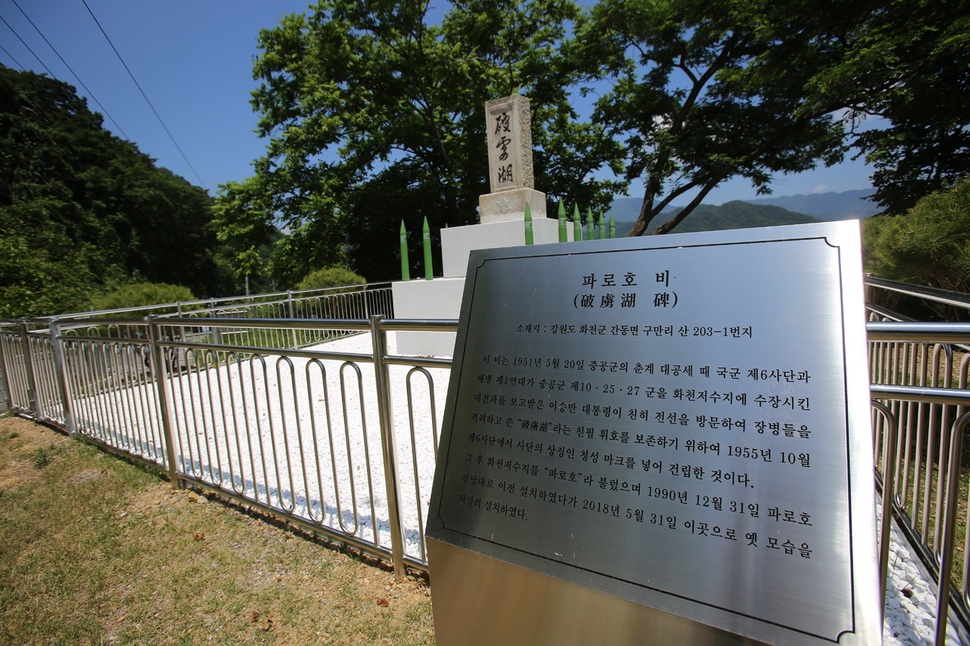 |
|
Heo Jang-hwan, co-president of the Korea-China International Friendship, Contact and Peace Promotion Society, explains how South Korean and UN forces used bulldozing machinery to dump the bodies of Chinese soldiers into Lake Paro in Hwacheon County, Gangwon Province. (all photos by Park Soo-hyuk)
|
Indiscriminate dumping of bodies possible violation of Geneva Convention
At the Battle of Hwacheon Reservoir in May 1951 during the Korean War, a numerically inferior force of South Korean and American troops engaged the Chinese army and won a great victory in which 24,141 Chinese were killed. This is often compared to the Battle of Salsu in AD 612, in which the outnumbered forces of the Korean kingdom of Goguryeo defeated and slaughtered a massive host from the Sui Dynasty of China. The reason the UN forces and the Chinese fought so fiercely over Hwacheon Reservoir (today called Paro Lake) was to take control of the hydroelectric plant at Hwacheon Dam. For South Korea, taking the dam was essential since it had so few sources of power at the time, while for North Korea, the dam was a strategic stronghold it could not afford to lose for the same reason. After the fighting was over, the South Korean and American troops faced the daunting task of dealing with Chinese corpses strewn across the battlefield. The late Heo Jang-won, who fought in the battle as a military engineer with the rank of first lieutenant in the 6th Division, vividly described the area around Paro Lake to his younger brother Heo Jang-hwan as a veritable living hell. “There were so many bodies, and the weather was getting hotter. They must have thought the simplest way of disposing the bodies was to dump them in Paro Lake. My brother said that after the battle was over, the South Korean and American forces used bulldozers and other heavy equipment to push the bodies of Chinese troops scattered across the surrounding hills and fields into Paro Lake,” Heo Jang-hwan said. According to an annal published by Hwacheon County that records the events of the Battle of Hwacheon Reservoir, “The retreating enemies were caught in a pincer, and most of them ended up buried in Hwacheon Reservoir. The shores of the reservoir and the surrounding ravines were covered with the bodies of the enemy. As South Korean support units advanced, they had to use bulldozers to push corpses out of the way. This was a slaughterhouse for the Chinese Communist troops.” If it is true that UN forces deliberately dumped bodies of Chinese troops into Paro Lake during the Korean War, that would be a violation of the Geneva Convention, some argue. Article 17 of the Geneva Convention states that dead enemy troops must be buried according to their religious customs and that their remains must eventually be repatriated. In 2001, Hwacheon County suggested that the central government recover the remains of Chinese troops from Paro Lake and set up a memorial in their honor, but the government did nothing about this. Locals think this was because the US would have been reluctant to acknowledge that its troops had dumped masses of enemy bodies into a reservoir, given the US advocacy of human rights around the world. They think that Seoul has not taken action out of concern for what the US might think.
 |
|
An image of Chinese POWs after the Battle of Hwacheon Reservoir. (provided by Hwacheon County Office)
|
 |
|
A monument to the Battle of Hwacheon Reservoir near what is now known as Paro Lake.
|







